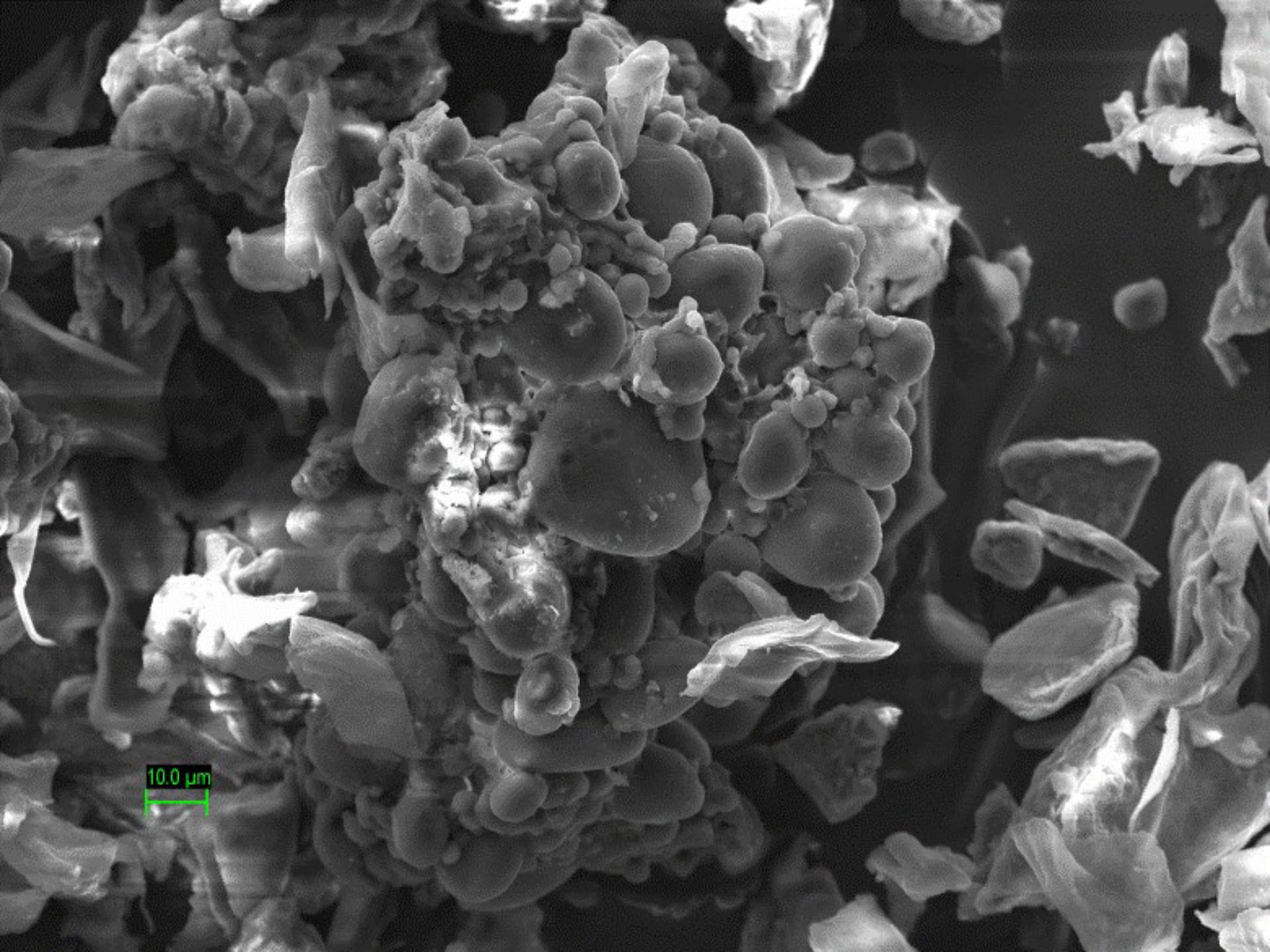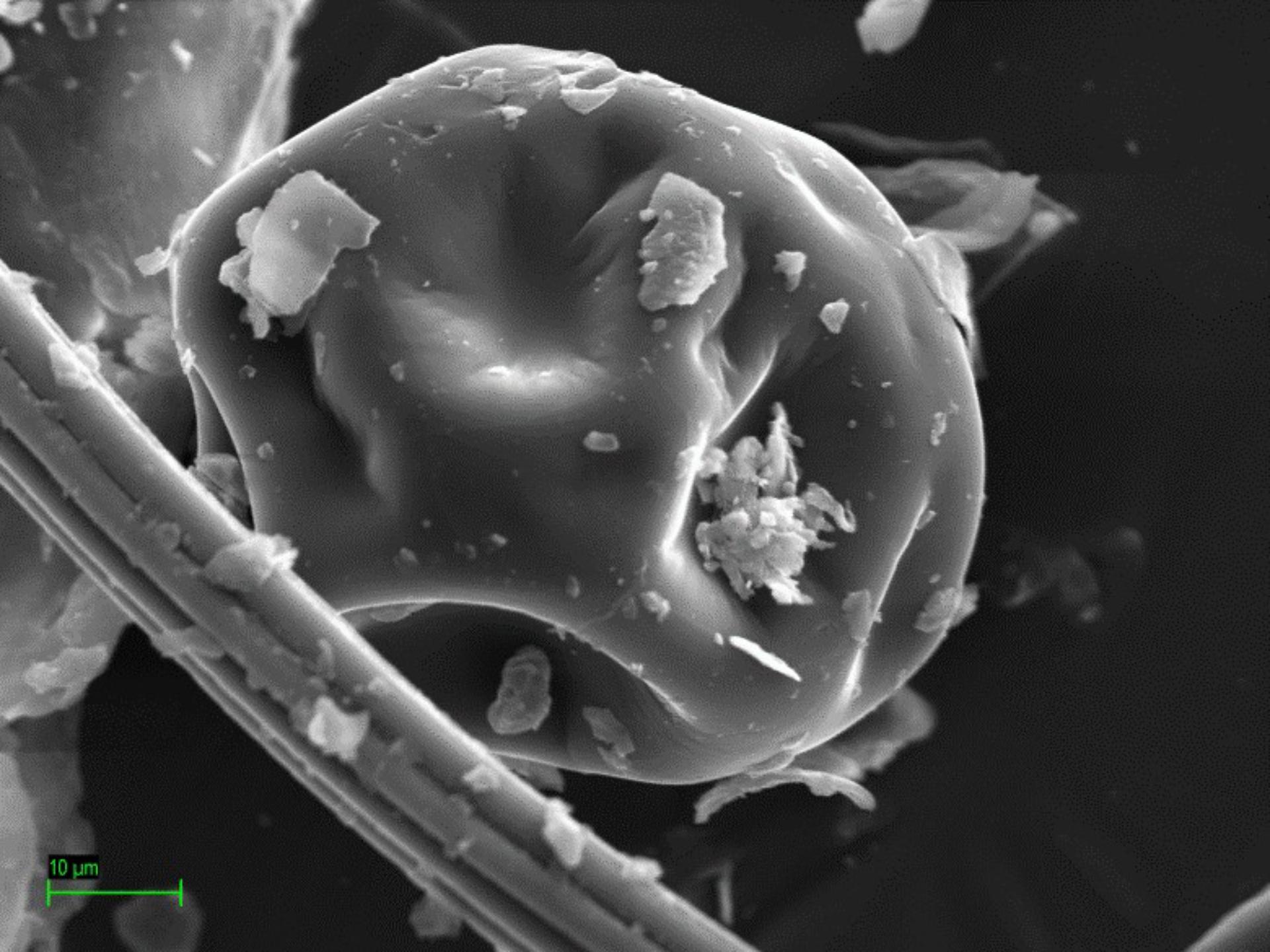
Are you sleeping in a bed full of dust mites?
Dust mite faeces are one of the main sources of allergens in household dust while mite allergens are a key inducer of allergic diseases worldwide.1 Dyson analyses Australian household dust to reveal what’s lurking in our homes and provide whole-house cleaning solutions
October 2020

As the summer months approach and humidity levels increase, we spend more time moving between indoors and outdoors increasing the diversity of the microbial landscape of the dust in our homes. Dust mites are mostly found in homes with higher humidity levels and constant warm temperatures, so with 85 per cent of Australians living along the coastline,2 dust mites are a common problem for Australians.3
The Results
Dyson recently collected and analysed dust samples from real homes across Australia. In a family home with pets on the eastern coast of Australia, researchers found a strong concentration of dust mites per gram of dust from the sofa and floors dust samples. In the same dust samples, researchers found significant amounts of mould including Cladosporium sp and Penicillium sp. In addition to typical mould hotspots of dark, damp and moist places, Cladosporium sp grows well in areas with water leaks or damage, humid surfaces and in heating or cooling ducts.In another home on the coast of Queensland, a high number of dust mites per gram of dust were found in dust from a child’s mattress and the floors. High levels of dander were also found on the mattress which can help make the ideal breeding ground for dust mites. In a family home within an inland rural town of northern NSW, researchers found dust mites from the couch and floors, as well as mould including Zygomycetes and Epicoccum. Other notable particulates observed from the floors included iron oxide and steel (possibly from steel, rust or appliances, utensils, tools), potassium chloride (found in fertiliser, food activities), and diatoms (a type of microalgae from water bodies and soils).
Dust Mite Season
Lead Research Scientist in Microbiology at Dyson, Gem McLuckie, says, “At Dyson, we farm our own dust mites so that we can collect their faeces. This means we can learn more about dust mite allergen and understand how our vacuums can best remove it from your home. It also means we know a thing or two about the conditions in which they thrive.”From December to May, dust mite breeding season takes place over which time the female of the species lays between 60-100 eggs.4 Their average lifecycle is 65-100 days and during that time they will produce approximately 2,000 faecal pellets and secrete even more proteins through their saliva – both of which can trigger allergies and impact your wellbeing.5 This means the numbers of dust mites in your home increases and the concentration of allergenic material in your home can be high.
Gem explains, “What’s more, over the festive season, we tend to invite more people into our homes. The more people we have indoors, the more dead skin cells are deposited around our home – the primary food source of dust mites. That’s why spring is such an important time to deep clean your home. Removing excess skin flakes from your domestic space limits the food source on offer for dust mites, which means that their rate of reproduction is inhibited during the dust mite season."
"Dust mites themselves are not dangerous,” assures Gem McLuckie. “The harmful allergen they create comes from the proteins present in their faecal pellets and body fragments. And that can have a considerable wellbeing impact for those living in homes where dust mite colonies are present.”
Impact on Wellbeing
Leading indoor pollution and health expert, Professor of Global Environmental Health, Sotiris Vardoulakis, from the Australian National University (ANU) Research School of Population Health says, “There are many different types of pollutants in the indoor environmental that can exacerbate asthma symptoms or respiratory allergies when breathed in. This includes smoke from fires, chemicals, and dust particles, and biological contaminants like mould spores, dust mites, viruses and possibly bacteria. Most commonly, people will experience irritated eyes, nose and throat when exposed to household dust but prolonged exposure to airborne dust can lead to chronic breathing and lung problems, and potentially increased risk of heart disease.”“As people move about their house, there are lots of activities that can re-suspend the dust in your home including cleaning, dusting, walking over carpet or simply sitting on a couch. Airborne spores can settle in your home and develop with the aid of moisture into mould and mildew. They can quickly grow and establish colonies, releasing mycotoxins, which are allergens. It’s important to have the best technology to help remove dust from your home including air purifiers with HEPA filters and vacuums offering advanced filtration, trapping microscopic particles such as pollen, dust and bacteria that you often can’t see.”
The impact of dust can be more serious to certain individuals. Positive tests for dust mite allergies are extremely common among people with asthma, types of dermatitis and frequent sinus infections. Studies also suggest that exposure to high levels of dust mites, especially early in life, increases your risk of developing a mite allergy and asthma too.6
With 1 in 9 Australians affected by asthma,7 Asthma Australia CEO, Michele Goldman, says dust and dust mites can act as irritants for sensitive airways. Michele explains, “Dust and dust mites are one of the biggest triggers for people with asthma, treating your asthma and allergies will help keep your symptoms under control. If you know you are triggered by dust and dust mites, the best approach to preventing an asthma or allergy flare-up is to reduce the amount of allergen in your home by cleaning on a regular basis.”
Skin Scavengers
Dust mites primarily feed on dander or dead skin cells shed by humans and animals. On average, humans shed 2g of skin per day,8 and even more at night where friction from bedding causes dead cells to shed. They can also get the nutrients they need from other household debris, like fish food, fungi and food crumbs.9Gem McLuckie says, “Wherever you spend the most time and shed the most skin, that’s where you’re most likely to find dust mites, and we spend one third of our lives in our beds. In fact, most of us are probably sleeping in a bed full of dust mite faeces. It's also common to find more mites in the beds and bedding of people who suffer from dry skin, as their discarded skin cells have reduced lipid content, which are dust mites’ favourite meal.”
Indeed, there can be millions of dust mites in a single mattress.10
House dust mites thrive in warm, damp and dark conditions, particularly where humidity levels are around 70 per cent and temperatures rise above 25 degrees Celsius.11 That means that areas where we sweat, breathe and share our body heat are perfect homes for mites, like sofas, mattresses, pet beds and other soft furnishings are fertile ground for dust mites, particularly in their breeding season. But there are other daily tasks that can have an impact too.
“Few mites can survive in humidity levels less than 45 per cent, but even raising the humidity levels for an hour and a half a day can enable house dust mites to survive. Cooking a meal or having a hot shower can easily keep humidity levels high in your home.”
So, what can you do to battle the dust mite season in your home?
Dyson Microbiologist Advice
1. Starve your dust mites: reducing the amount of skin cell debris in your home minimises the primary food source of dust mites, inhibiting them from reproducing exponentially during the dust mite season. Vacuum your mattress on both sides with a machine with an advanced filtration system, as well as your sofa and other upholstery.2. Manage humidity levels: dust mites hydrate themselves by absorbing water from the air, so keeping relative humidity levels below 45 per cent at room temperature will kill most of them off.12 Air out bedding and blankets frequently, as well as ventilating your home by opening the window or using a HEPA-filtered air purifier. Don’t forget to use the extractor fan after showering or while cooking too, as even raising the humidity levels for an hour and a half a day can enable house dust mites to survive.
3. Control the temperature: dust mites thrive at temperatures of 25 degrees Celsius, so ensure you vacuum warmer areas in your home frequently to control levels of dust mites, like pet baskets, sofas or mattresses. Washing bedding or other soft furnishing at 60-90 degrees Celsius will break up allergens too.
4. Top tips: don’t forget that dust mites and their faeces are microscopic. If you can see dust in your home, dust mites may already be thriving!
Jane Zouch
Email: jane.zouch@dyson.com
[1] Sarwar M (29 April 2020), House Dust Mites : Ecology, Biology, Prevalence, Epidemiology and Elimination, Parasitology and Microbiology Research.
[2] https://www.abs.gov.au/ausstats/abs@.nsf/previousproducts/1301.0feature%20article32004
[3] https://www.healthdirect.gov.au/dust-mites
[4] In the last five weeks of her life.
[5] Sarwar, Muhammad (2020), House Dust Mites: Ecology, Biology, Prevalence, Epidemiology and Elimination, IntechOpen.
[6] American College of Allergy, Asthma and Immunology (2020) Dust Allergy. Available at: https://acaai.org/allergies/types/dust-allergy
[7] Australian Institute of Health and Welfare, Asthma (web report), updated 25 Aug 2020
[8] Wechsler, Charles J et al. (2011) ‘Squalene and cholesterol in dust from Danish homes and daycare centers’, Environmental Science & Technology, 45 (9) 3872-3879.
[9] Platts-Mills, T. A. E., de Weck, A. L., Aalberse, R. C., Bessot, J. C., Bjorksten, B., Bischoff, E., Bousquet, J., Van Bronswijk, J. E. M. H., ChannaBasavanna, G. P., Chapman, M., Colloff, M., Goldstein, R. A., Guerin, B., Hart, B., Hong, C. S., Ito, K., Jorde, W., Korsgaard, J., Le Mao, J., Wen, T. (1989). Dust mite allergens and asthma-A worldwide problem. The Journal of allergy and clinical immunology, 83(2 PART 1), 416-427.
[10] Sharma, D., Dutta, B. K., & Singh, A. B. (2011). Dust mites population in indoor houses of suspected allergic patients of South Assam, India. ISRN allergy, 576849. https://doi.org/10.5402/2011/576849
[11] Asthma and Allergy Foundation of America (2015) Dust Mite Allergy. Available at: https://www.aafa.org/dust-mite-allergy/
[12] 22 degrees Celsius. Optimal relative humidity levels will depend on temperature.
 Hubungi kami
Hubungi kami Email kami
Email kami Meminta rapat
Meminta rapat Obrolan langsung
Obrolan langsung
